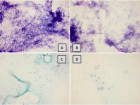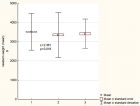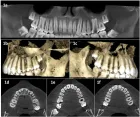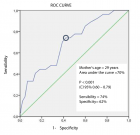Abstract
Research Article
Production and evaluation of enzyme-modified lighvan cheese using different levels of commercial enzymes
Mohammad B Habibi Najafi* and Mohammad Amin Miri
Published: 27 February, 2020 | Volume 3 - Issue 1 | Pages: 011-016
Enzyme-modified cheeses are concentrated cheese flavors produced enzymatically from dairy substrates in order to provide an intense source of cheese flavor with broad applications. Lighvan cheese is an Iranian traditional cheese with a pleasant taste and flavor generated after ripening. Therefore, the objective of the present study was to use commercial enzymes to produce enzyme-modified Lighvan cheese made from unripened and immature cheese. In this study, Neutrase (0.05%, 0.15%, and 0.2%) and Flavourzyme (0.05%, 0.1%, and 0.2%) were added to the base mixture. The resulting mixture was stored in an incubator for 24, 72, and 96 h to provide intense cheese flavor. Sensory evaluations of all samples in terms of bitterness, flavor, taste, and general acceptance were also carried out.
The results of the sensory evaluations revealed no significant difference between most of the samples in terms of bitterness, flavor, taste, and general acceptance with respect to the incubation duration and the type and level of the commercial enzymes (p ≤ 0.05). However, the effect of the different concentrations of Flavourzyme on the cheese texture was significant after 24, 72, and 96 h of incubation (p ≤ 0.05). In addition, the effects of the different concentrations of Neutrase on the cheese texture were significant after 96 h of incubation (p ≤ 0.05). Finally, the effect of different concentrations of Flavourzyme on the general acceptance of the samples was significant following 24, 72, and 96 h of incubation (p ≤ 0.05). In general, considering the flavor, taste, texture and general acceptance scores of the enzyme-modified Lighvan cheese samples, the best sample was the sample produced by using 0.1% Neutrase and 0.1% Flavourzyme mixture.
Read Full Article HTML DOI: 10.29328/journal.ijcmbt.1001009 Cite this Article Read Full Article PDF
Keywords:
Lighvan cheese; Enzyme-modified cheese; Commercial enzymes; Sensory properties
References
- Miri MA, Najafi MBH. The effect of adding enzyme-modified cheese on sensory and texture properties of low- and high-fat cream cheeses. Int J Dairy Technol. 2011; 64: 92-98.
- Fox PF. Cheese: chemistry, physics and microbiology. Chapman and Hall Publishing. 2004.
- Kilcawley KN, Wilkinson MG, Fox PF. A survey of the composition and proteolytic indices of commercial enzyme-modified Cheddar cheese. Int Dairy J. 2000; 10: 181-190.
- Hoa NT, Houang TTX, Minh NP, Dao DT. Investigation of enzymatic optimization by Flavourzyme and Celluclast for soy protein hydrolysate powder. Int J Adv Pharm Biol Chem. 2014; 3: 550-562.
- Chen Z, Wang Y, Wei L, Wang J, Chen H. Anovel cross-linked enzyme aggregates (CLEAs) of papain and neutrase-production, partial characterization and application. Int J Biol Macromol. 2017; 95: 650-657. PubMed: https://www.ncbi.nlm.nih.gov/pubmed/27913224
- Miri MA. Enzyme Modified Cheese (EMC) in the formulation of cream cheese: study on sensory and texture properties. Ferdowsi university of Mashhad. 2010.
- Habibi Najafi MB, Lee BH. Debittering of tryptic digests from beta casein and enzyme modified cheese by X-PDP. Iran J Sci Technol Trans a Sci. 2007; 31: 263-270.
- Ali B, Khan KY, Majeed H, Xu L, Wu F, et al. Imitation of soymilk-cow’s milk mixed enzyme modified cheese: their composition, proteolysis, lipolysis and sensory properties. J Food Sci Technol. 2017; 54: 1273-1285. PubMed: https://www.ncbi.nlm.nih.gov/pubmed/28416878
- Azarnia S, Lee BH, Yaylayan V, Kilcawley KN. Proteolysis development in enzyme-modified Cheddar cheese using natural and recombinant enzymes of Lactobacillus rhamnosus S93. Food Chem. 2010; 120: 174-178.
- Mousavi-Nasab M, Radi M, Afshari Jouybari H. Investigation of enzyme modified cheese production by two species of Aspergillus. Afr J Biotechnol. 2010; 9: 508-511.
- Ali B, Khan KY, Majeed H, Xu L, Bakry AM, et al. Production of ingredient type flavoured white enzyme modified cheese. J Food Sci Technol. 2019; 56: 1683-1695. PubMed: https://www.ncbi.nlm.nih.gov/pubmed/30996404
- Aminifar M, Hamedi M, Emam-Djomeh Z, Mehdinia A. The effect of ovine and bovine milk on the textural properties of lighvan cheese during ripening. Int J Dairy Technol. 2013; 66: 45-53.
- Park SY, Gibbs BF, Lee BH. Effects of crude enzyme of Lactobucillus casei LLG on water-soluble peptides of enzyme-modified cheese. Food Res Int. 1995; 28: 43-49.
- Ghazizadeh M, Raseghi A. Basic Sensory methods for food evalvation. National nutrition and food technology research institute. 1998.
- Haileselassie SS, Lee BH, Gibbs BF. Production of enzyme modified cheese and bioactive peptides by Lactobacillus and commercial enzymes. McGill University. 1999; 31-51.
Figures:
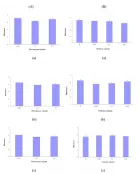
Figure 1
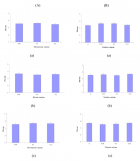
Figure 2
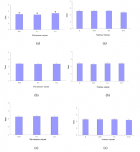
Figure 3
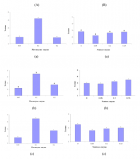
Figure 4
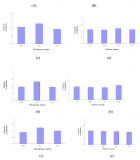
Figure 5
Similar Articles
-
Production and evaluation of enzyme-modified lighvan cheese using different levels of commercial enzymesMohammad B Habibi Najafi*,Mohammad Amin Miri. Production and evaluation of enzyme-modified lighvan cheese using different levels of commercial enzymes. . 2020 doi: 10.29328/journal.ijcmbt.1001009; 3: 011-016
Recently Viewed
-
Metabolic syndrome: A case reportDragan Klaric,Marta Martinis*,Marta Klaric. Metabolic syndrome: A case report. Ann Clin Endocrinol Metabol. 2021: doi: 10.29328/journal.acem.1001022; 5: 031-035
-
Hypercalcaemic Crisis Associated with Hyperthyroidism: A Rare and Challenging PresentationKarthik Baburaj*, Priya Thottiyil Nair, Abeed Hussain, Vimal MV. Hypercalcaemic Crisis Associated with Hyperthyroidism: A Rare and Challenging Presentation. Ann Clin Endocrinol Metabol. 2024: doi: 10.29328/journal.acem.1001029; 8: 001-003
-
Evaluation of novel culture media prepared from plant substrates for isolation and identification of Cryptococcus Neoformans Species ComplexEllabib M*,Krema ZA,Mokthar ES,El Magrahi HS,Eshwika A,Cogliati M. Evaluation of novel culture media prepared from plant substrates for isolation and identification of Cryptococcus Neoformans Species Complex. Int J Clin Microbiol Biochem Technol. 2018: doi: 10.29328/journal.ijcmbt.1001002; 1: 009-013
-
A Review on filaricidal activity of phytochemical extracts against filariasis and the Parasites Genomic DiversityAM Gumel*,MM Dogara. A Review on filaricidal activity of phytochemical extracts against filariasis and the Parasites Genomic Diversity. Int J Clin Microbiol Biochem Technol. 2018: doi: 10.29328/journal.ijcmbt.1001004; 1: 024-032
-
Trends of Antibiotic Resistance among Uropathogens in Medical vs. Non-Medical Departments of Al-Shifa Medical Complex in Gaza Strip: A Retrospective, Cross-Sectional StudyKhaled Alkhodari*, Yasmin Al-Shurafa, Hammam AL-louh, Rafat Lubbad. Trends of Antibiotic Resistance among Uropathogens in Medical vs. Non-Medical Departments of Al-Shifa Medical Complex in Gaza Strip: A Retrospective, Cross-Sectional Study. Int J Clin Microbiol Biochem Technol. 2024: doi: 10.29328/journal.ijcmbt.1001028; 7: 001-005
Most Viewed
-
Impact of Latex Sensitization on Asthma and Rhinitis Progression: A Study at Abidjan-Cocody University Hospital - Côte d’Ivoire (Progression of Asthma and Rhinitis related to Latex Sensitization)Dasse Sery Romuald*, KL Siransy, N Koffi, RO Yeboah, EK Nguessan, HA Adou, VP Goran-Kouacou, AU Assi, JY Seri, S Moussa, D Oura, CL Memel, H Koya, E Atoukoula. Impact of Latex Sensitization on Asthma and Rhinitis Progression: A Study at Abidjan-Cocody University Hospital - Côte d’Ivoire (Progression of Asthma and Rhinitis related to Latex Sensitization). Arch Asthma Allergy Immunol. 2024 doi: 10.29328/journal.aaai.1001035; 8: 007-012
-
Causal Link between Human Blood Metabolites and Asthma: An Investigation Using Mendelian RandomizationYong-Qing Zhu, Xiao-Yan Meng, Jing-Hua Yang*. Causal Link between Human Blood Metabolites and Asthma: An Investigation Using Mendelian Randomization. Arch Asthma Allergy Immunol. 2023 doi: 10.29328/journal.aaai.1001032; 7: 012-022
-
An algorithm to safely manage oral food challenge in an office-based setting for children with multiple food allergiesNathalie Cottel,Aïcha Dieme,Véronique Orcel,Yannick Chantran,Mélisande Bourgoin-Heck,Jocelyne Just. An algorithm to safely manage oral food challenge in an office-based setting for children with multiple food allergies. Arch Asthma Allergy Immunol. 2021 doi: 10.29328/journal.aaai.1001027; 5: 030-037
-
Snow white: an allergic girl?Oreste Vittore Brenna*. Snow white: an allergic girl?. Arch Asthma Allergy Immunol. 2022 doi: 10.29328/journal.aaai.1001029; 6: 001-002
-
Cytokine intoxication as a model of cell apoptosis and predict of schizophrenia - like affective disordersElena Viktorovna Drozdova*. Cytokine intoxication as a model of cell apoptosis and predict of schizophrenia - like affective disorders. Arch Asthma Allergy Immunol. 2021 doi: 10.29328/journal.aaai.1001028; 5: 038-040

If you are already a member of our network and need to keep track of any developments regarding a question you have already submitted, click "take me to my Query."






